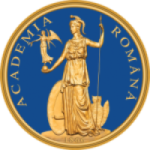Results
The project Synchronic and Diachronic Perspectives on Romanian Lexical Blending: from the Latin Inherited Lexicon to Present-day English Influence aimed to provide a comprehensive understanding of lexical blending in Romanian through three distinct research directions:
(a) Diachronic research: We conducted an analysis of the lexical blends found in academic dictionaries (DA-DLR, DELR, DEX), offering a comprehensive description of these blends from both formal and semantic perspectives. Contrary to prevailing beliefs in Romanian linguistics, the dictionaries do contain deliberate blends, which exhibit distinct properties from speech-error blends.
(b) Synchronic corpus research: We examined 324 new blends extracted from a corpus of articles spanning the past 20 years. Notably, the more frequently used blends are of international origin, shedding light on a lesser-known aspect of English influence on Romanian, namely the subtle changes in the word-formation system.
(c) Experimental research: This line of inquiry involved a series of questionnaires and experiments, revealing that Romanian speakers comprehend lexical blends with ease by activating the source words, even if they had not encountered those specific blends before. Additionally, when asked to name hybrid objects, Romanian speakers frequently utilize lexical blending.
The most significant achievement of the LexBlend project is the creation of a comprehensive database of Romanian lexical blends. This database comprises a corpus of old blends (compiled within the diachronic research), a corpus of new blends (compiled within the synchronic corpus research), and a corpus of experimentally elicited blends. Prior to this project, Romanian lexical blending had been described and analyzed based on a limited number of randomly selected examples. With the availability of this extensive dataset, we can now conduct an informed analysis of the patterns and trends displayed in lexical blending, a word-formation process that has been largely overlooked in Romanian linguistics.
